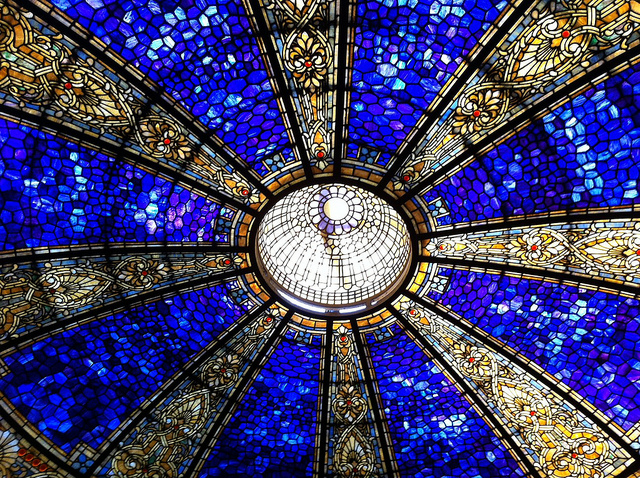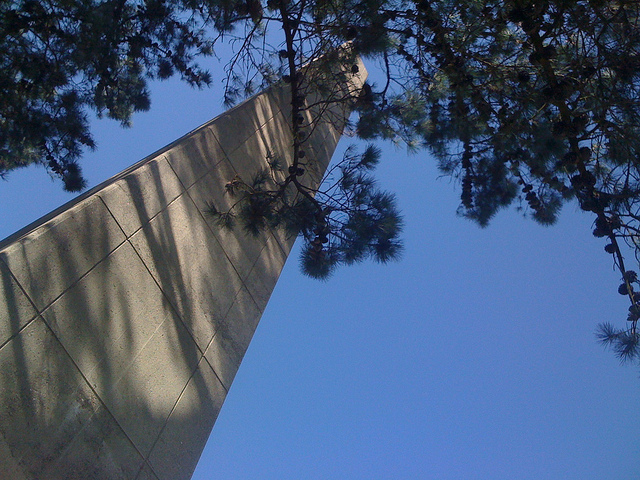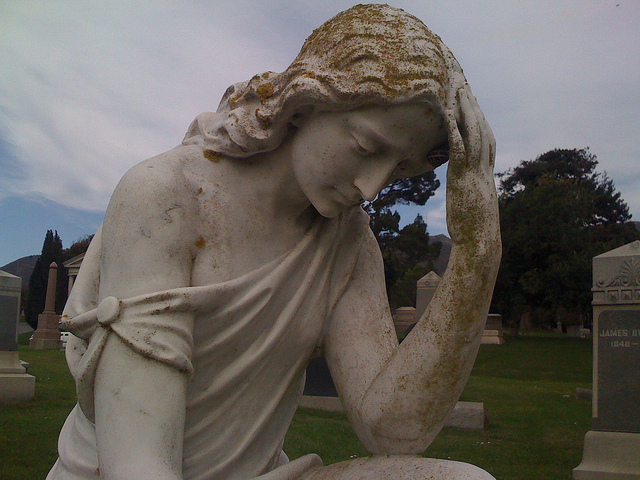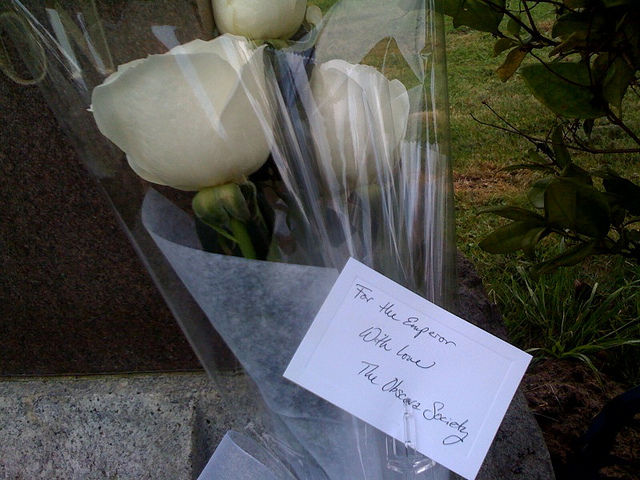Society Adventures: Cemetery Explorations at the Colma Necropolis
Between 1920 and 1940, the city of San Francisco disinterred and moved hundreds of thousands of bodies in the largest relocation of the dead in history.
On October 14, we grabbed our bikes and set out to explore the sprawling Colma Necropolis, where just under 2000 living residents share their city with 1.5 million dead.

The city is home to 17 cemeteries, covering the hillsides of the gentle valley with tombstones, mausoleums and columbariums. Burials began in the 1880s and continue to this day, with the largest influx of new residents moving in during San Francisco’s mass export of its Gold Rush era dead.
San Francisco realized by the turn of the last century that it was quickly running out of space on the tiny peninsula and as cemeteries quickly filled to bursting, city fathers began gently implying, then strongly suggesting, that a new place be found for the dead. The place they settled on was Colma, countryside just outside the city, still within a reasonable train or carriage distance for funerals. New burials began almost immediately, but it took the city another couple of decades and a legal battle to finally begin digging people up.
Of the hundreds of thousands relocated, many were moved individually by carriage or hearse, their headstones transported with them. But for those who had no family, or whose family could not raise the fees for transport, a more ignoble fate awaited them in Colma’s many headstoneless mass graves.
Highlights of our explorations:

Inside the locked “catacombs” at Cypress Lawn, where a modest facade hides a showpiece of spectacular stained glass. They are not catacombs in the traditional sense, instead a stately columbarium holding niches for cremated remains all under a truly gorgeous stained glass ceiling.

Laurel Hill Mound, a mass grave for about 38,000 bodies moved from San Francisco and marked with an impressive obelisk. We learned the surprising (to me, at least) fact that Phineas Gage’s headless body was counted among the residents. Gage died in San Francisco 12 years after he was famously injured by a flying tamping rod in a railway construction accident which punctured his skull (now residing at the Warren Museum, Boston).

Holy Cross Catholic Cemetery was the first cemetery established in Colma, established in 1887 to accommodate the city’s overflowing population of dead Catholics. It is now home to more than 350,000 bodies, including another large mass grave. This cemetery sits on rolling hills with a view over the modern city, and features some of the most impressive old mausoleums and weeping angels, as well as the largest columbarium in the world.
.jpg)
Wyatt Earp may be the most famous non-Jew to be buried at Hills of Eternity Jewish Cemetery. His tombstone has been stolen twice, but a new headstone for him and his wife Josephine is inscribed “There is nothing so sacred as honor, and nothing as loyal as love.”

Somehow the bike ride was uphill both ways, but everyone made it to the end, for our last stop to pay tribute to the Emperor at the sprawling Woodlawn Cemetery.

We brought flowers for Joshua Norton, first and last Emperor of the United States and Protector of Mexico. Norton’s life was Gold Rush “Riches to Rags” story - he arrived in the city in 1849 with a fortune, and then dramatically lost it all speculating on rice futures. A broken man, his disappeared, only to re-emerge as an eccentric other eccentrics could learn a few things from.
He not only declared himself Emperor and sported the appropriate regalia, he issued political decrees in the local newspapers, attended the opera gratis, and created his own currency. When he died in 1880, 30,000 mourners took to the streets, and the following day the San Francisco Chronicle ran the headline “Le Roi est Mort” (“The King is Dead”), and ran his obituary on the front page.
He was originally buried in the city’s Masonic Cemetery, but was moved here in 1934, where his grave site is visited annually on the anniversary of both his birth and death, and sits surrounded by headstones and markers of admirers and followers.
MORE PHOTOS
DO IT YOURSELF
Tours are available from the Colma Historical Association, located at 1500 Hillside Blvd., across from Olivet Cemetery. If you’d prefer to adventure on your own, stop by and pick up some of the helpful materials they have on hand before venturing out. Bikes are allowed in all of the cemeteries, although there are some major roads that must be crossed in order to visit multiple cemeteries.
THANK YOU TO EVERYONE WHO JOINED US!
The Obscura Society is the real-world exploration arm of Atlas Obscura We seek out secret histories, unusual access, and opportunities for our community to explore strange and overlooked places hidden all around us. Join us on our next adventure!
All Upcoming Obscura Society Events
If you’d like to be notified about future San Francisco Bay Area events, be sure to join our Obscura Society Bay Area Events Announcement List and join our local community pages on Facebook
Facebook: Obscura Society San Francisco
Facebook: Obscura Society Los Angeles
Facebook: Obscura Society New York City
Society Adventures are field reports from our favorite Obscura Society explorations - see them all here>
.png)



Follow us on Twitter to get the latest on the world's hidden wonders.
Like us on Facebook to get the latest on the world's hidden wonders.
Follow us on Twitter Like us on Facebook